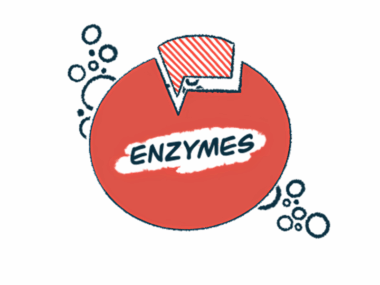Brain blood vessels key to new MS treatments, researchers argue
Better understanding of interactions cited as crucial for drug discovery
Written by |

Developing a more comprehensive understanding of the interactions between the brain, blood vessels, and the immune system holds great promise for unlocking new ways to treat neurological diseases like multiple sclerosis (MS), a team of researchers argued in a new commentary paper.
“Interactions between the brain, blood vessels, and the immune system are a common thread in the development and progression of many neurological diseases that have been traditionally viewed as very different conditions,” Katerina Akassoglou, PhD, co-author of the paper at the Gladstone Institutes, said in a news story from the California-based biomedical research institution.
“This is a new opportunity for drug discovery that goes beyond addressing genes alone or environmental factors alone,” Akassoglou said. “To usher in this new era, we must leverage new technologies and embrace an interdisciplinary approach that accounts for the important roles of immune and vascular systems in neurodegeneration.”
Akassoglou and the other scientists have studied the mechanisms underlying diseases like MS. Now, she and her collaborators have detailed the insights from their work in a commentary titled “Pioneering discovery and therapeutics at the brain-vascular-immune interface.” It was published in the journal Cell, in the 50th anniversary “Focus on Neuroscience” issue.
Interactions seen between brain, blood vessels, and immune system
MS is a neurological disorder characterized by inflammation that damages nerve tissue in the brain and spinal cord. The exact biological mechanisms that drive MS are incompletely understood, but are believed to involve a complex interplay between the brain and immune cells.
Here, the researchers argued that the neurovascular system — the network of blood vessels needed to bring oxygen and nutrients to brain cells — also plays a critical role that needs to be better understood if scientists are to ever fully tackle the disease and find novel treatments.
The brain is full of blood vessels, but blood cannot freely pass from these vessels into brain tissue. Standing in the way is a regulatory wall of cells called the blood-brain barrier, or BBB. If the brain is an exclusive nightclub, then the BBB is the muscled bouncer making sure that only the VIPs with proper clearance are allowed in. In the human body, it keeps out harmful substances, like germs and viruses, while keeping beneficial chemicals in. Needed medications are designed to be able to pass through the BBB.
Emerging data have shown that BBB dysfunction and inflammation coexist in a vicious cycle in MS and other neurological disorders. BBB disruption and the consequent leakage of blood proteins into the brain leads to inflammation, which damages the blood-brain barrier, causing further dysfunction and more inflammation, and so forth. In addition to driving damage, this cycle also makes it harder for repair mechanisms in the brain to kick in and fix the injured tissue.
“Neurovascular pathology, including vessel damage or BBB disruption resulting in blood protein [being able to enter] into the brain, is a common thread in neurological diseases with diverse [causes] that correlate with early disease onset and progression,” the researchers wrote.
Leveraging advances in genomics, imaging, and machine learning, this emerging field is poised to revolutionize our understanding of brain physiology and disease with paradigm-shifting discoveries at an unprecedented pace.
One example given by Akassoglou and colleagues is a blood protein called fibrin, which is known to be a potent trigger of inflammation when it gets into the brain. Blocking the protein, however, can reduce toxic immune responses, studies have found.
“As a first step, we know that neutralizing fibrin reduces the burden posed by vascular dysfunction,” Akassoglou said. According to the Institutes, “neutralizing fibrin appears to be protective in multiple animal models of disease.”
In their commentary, the scientists argue that if complicated interactions with the neurovascular system were more fully understood — down to the level of pinpointing specific genes and the signaling molecules involved — then these processes “can be harnessed for the selective inactivation of neurotoxic innate immune responses.”
In the past, obtaining such a highly detailed understanding of these systems has simply been impossible because of technological limitations. But new breakthroughs like comprehensive genomic studies, high-end imaging technology, and machine learning to process data, may be up to the challenge, the researchers say.
“Leveraging advances in genomics, imaging, and machine learning, this emerging field is poised to revolutionize our understanding of brain physiology and disease with paradigm-shifting discoveries at an unprecedented pace,” the team concluded.






